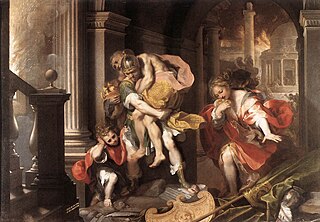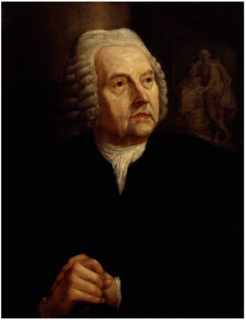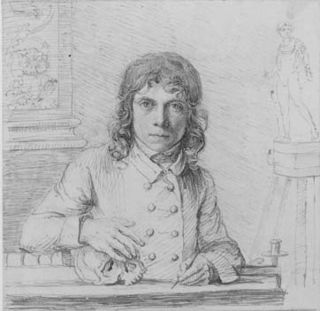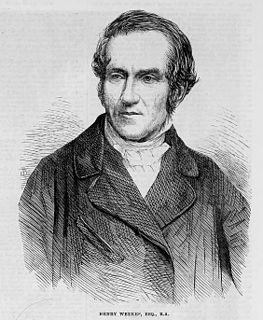
John Bacon RA (24 November 1740 – 7 August 1799) was a British sculptor who worked in the late 18th century.

John Bacon RA (24 November 1740 – 7 August 1799) was a British sculptor who worked in the late 18th century.
thumb|Trade card designed by John Bascon, about 1821 V&A Museum no. 29380B/24 John Bacon was born in Southwark on 24 November 1740, the son of Thomas Bacon, a clothworker [1] whose family had formerly held a considerable estate in Somersetshire. [1] At the age of fourteen, John was apprenticed to Mr Crispe's porcelain manufactory at Lambeth, where he was at first employed in painting the small ornamental pieces of china. [1] His great skill at moulding led to his swift promotion to modeller. He devoted the additional income to the support of his parents, {then in straitened} circumstances. [1] Observing the models sent by different eminent sculptors to be fired at the adjoining pottery kiln determined the direction of his genius: [1] he began imitating them with such proficiency that a small figure of Peace [1] sent by him to the Society for the Encouragement of the Arts won a prize. [1] Subsequently, its highest awards were given to him nine times between 1763 and 1776. [1] During his apprenticeship, he also improved the method of working statues in stoneware, an art which he afterwards carried to perfection. [1]

Southwark is a district of Central London and is the north-west of the London Borough of Southwark. Centred 1 1⁄2 miles (2.4 km) east of Charing Cross, it fronts the River Thames and the City of London to the north. It was at the lowest bridging point of the Thames in Roman Britain, providing a crossing from Londinium, and for centuries had the only Thames bridge in the area, until a bridge was built upstream more than 10 miles (16 km) to the west. It was a 1295-enfranchised Borough in the county of Surrey, apparently created a burh in 886, containing various parishes by the high medieval period, lightly succombing to City attempts to constrain its free trade and entertainment. Its entertainment district, in its heyday at the time of Shakespare's Globe Theatre has revived in the form of the Southbank which overspills imperceptibly into the ancient boundaries of Lambeth and commences at the post-1997 reinvention of the original theatre, Shakespeare's Globe, incorporating other smaller theatre spaces, an exhibition about Shakespeare's life and work and which neighbours Vinopolis and the London Dungeon. After the 18th century decline of Southwark's small wharves, the borough rapidly grew in population and saw the growth of great docks, printing/paper, railways, goods yards, small artesan and other often low-wage industries and Southwark was among many such inner districts to see slum clearance and replacement largely with social housing during the late 19th and early 20th centuries. It is now at an advanced stage of regeneration and has the City Hall offices of the Greater London Authority. At its heart is the area known as Borough, which has an eclectic covered and semi-covered market and numerous food and drink venues as well as the skyscraper The Shard. Another landmark is Southwark Cathedral, a priory then parish church created a cathedral in 1905, noted for its Merbecke Choir.

Porcelain is a ceramic material made by heating materials, generally including kaolin, in a kiln to temperatures between 1,200 and 1,400 °C. The toughness, strength, and translucence of porcelain, relative to other types of pottery, arises mainly from vitrification and the formation of the mineral mullite within the body at these high temperatures. Though definitions vary, porcelain can be divided into three main categories: hard-paste, soft-paste and bone china. The category that an object belongs to depends on the composition of the paste used to make the body of the porcelain object and the firing conditions.

Lambeth is a district in Central London, England, in the London Borough of Lambeth. It is situated 1 mile (1.6 km) south of Charing Cross. The population of the London Borough of Lambeth was 303,086 in 2011. The area experienced some slight growth in the medieval period as part of the manor of Lambeth Palace. By the Victorian era the area had seen significant development as London expanded, with dense industrial, commercial and residential buildings located adjacent to one another. The changes brought by World War II altered much of the fabric of Lambeth. Subsequent development in the late 20th and early 21st centuries has seen an increase in the number of high-rise buildings. The area is home to the International Maritime Organization.
Bacon first attempted working in marble around 1763, [1] when he resided in George Yard on Oxford Rd. near Soho Square. He exhibited a medallion of George III and a group of Bacchanalians that year and a bas relief of the Good Samaritan the next. [2] During the course of his early efforts in this art, he was led to improve the method of transferring the form of the model to the marble ("getting out the points") by the invention of a more perfect instrument for the purpose. This instrument possessed many advantages: it was more exact, took a correct measurement in every direction, was contained in a small compass, and could be used on either the model or the marble. [1]

Marble is a metamorphic rock composed of recrystallized carbonate minerals, most commonly calcite or dolomite. Marble is typically not foliated, although there are exceptions. In geology, the term "marble" refers to metamorphosed limestone, but its use in stonemasonry more broadly encompasses unmetamorphosed limestone. Marble is commonly used for sculpture and as a building material.

Soho Square is a garden square in Soho, London owned until at least 1966 by the Portland family but which has since 1954 been de facto a public park leased by the Soho Square Garden Committee to Westminster City council. It was originally called King Square after Charles II. Its statue of Charles II has stood since the square's 1681 founding except between 1875 and 1938; it is today well-weathered. By the time of the drawing of a keynote map of London in 1746 the newer name for the square had gained sway. During the summer, Soho Square hosts open-air free concerts.

George III was King of Great Britain and King of Ireland from 25 October 1760 until the union of the two countries on 1 January 1801, after which he was King of the United Kingdom of Great Britain and Ireland until his death in 1820. He was concurrently Duke and prince-elector of Brunswick-Lüneburg ("Hanover") in the Holy Roman Empire before becoming King of Hanover on 12 October 1814. He was the third British monarch of the House of Hanover, but unlike his two predecessors, he was born in Great Britain, spoke English as his first language, and never visited Hanover.
By 1769, he was working for Ms Coade's Artificial Stone Manufactory [2] and in that year he was awarded the first gold medal for sculpture awarded by the Royal Academy [1] for a bas-relief representing the escape of Aeneas and Anchises from Troy. [1] In 1770, he exhibited a figure of Mars, [1] redone in marble the next year for Mr Pelhalm, [3] which gained him the gold medal from the Society of Arts and his election as an associate of the Royal Academy (ARA). [1] In 1771, Ms Coade appointed him works supervisor at her manufactory: he directed both model-making and design there until his death.[ citation needed ] In 1774, he was gifted with a new establishment at 17 Newman St. by a Mr Johnson who was a great admirer of his work. [4] He executed a bush of George III for Christ Church, Oxford, and retained that king's favour throughout his life. [1] Jealous competitors criticised him for ignorance of classic style, a charge he refuted with a bust of Jupiter Tonans. [5] In 1795, he completed a statue of Samuel Johnson for St Paul's Cathedral. [6]

Eleanor Coade was a British businesswoman known for manufacturing Neoclassical statues, architectural decorations and garden ornaments made of Lithodipyra or Coade stone for over 50 years from 1769 until her death. She should not be confused or conflated with her mother, also named Eleanor.

Coade stone or Lithodipyra or Lithodipra was stoneware that was often described as an artificial stone in the late 18th and early 19th centuries. It was used for moulding neoclassical statues, architectural decorations and garden ornaments that both were of the highest quality and remain virtually weatherproof today. Produced by appointment to George III and the Prince Regent, it features on St George's Chapel, Windsor; The Royal Pavilion, Brighton; Carlton House, London; the Royal Naval College, Greenwich; and a large quantity was used in the refurbishment of Buckingham Palace in the 1820s.

In Greco-Roman mythology, Aeneas was a Trojan hero, the son of the prince Anchises and the goddess Aphrodite (Venus). His father was a first cousin of King Priam of Troy, making Aeneas a second cousin to Priam's children. He is a character in Greek mythology and is mentioned in Homer's Iliad. Aeneas receives full treatment in Roman mythology, most extensively in Virgil's Aeneid, where he is cast as an ancestor of Romulus and Remus. He became the first true hero of Rome. Snorri Sturluson identifies him with the Norse Æsir Vidarr.
On 4 August 1799 he was suddenly attacked with an affliction described as "inflammation"; he died a little more than two days later [5] on the 7th [7] and was buried in Whitefield's Tabernacle in London. [1] [n 1] His estate was valued at £60,000, which was divided equally among his children. [8] His widow was his second wife; he left a family fully composed of six sons and three daughters. [5] His sons Thomas Bacon[ citation needed ] and John Bacon Jr. continued his work, [7] and one of his daughters married the artist Mr Thornton. [9] His memoirs were edited by Rev. Cecil and published in 1801. [10]

Inflammation is part of the complex biological response of body tissues to harmful stimuli, such as pathogens, damaged cells, or irritants, and is a protective response involving immune cells, blood vessels, and molecular mediators. The function of inflammation is to eliminate the initial cause of cell injury, clear out necrotic cells and tissues damaged from the original insult and the inflammatory process, and initiate tissue repair.

Whitefield's sometimes Whitfield's Tabernacle is a former Calvinistic Methodist and Congregational church in Kingswood, a town on the eastern edge of Bristol where George Whitefield preached in the open air to coal miners. The name refers to two buildings in which the church met.
Bacon has been reckoned the founder of the British School of sculpture, [5] although he himself considered Roubiliac's statue of Eloquence for Waterloo Bridge to be such a fine piece of sculpture that he was sure he could never equal it. [9] He won numerous awards, held the esteem of George III, and continued to be praised in the 19th [5] and 20th centuries. [1] His works adorn St Paul's Cathedral and Westminster Abbey in London; Christ Church and Pembroke College in Oxford; Bath Abbey; and Bristol Cathedral. [1]

Waterloo Bridge is a road and foot traffic bridge crossing the River Thames in London, between Blackfriars Bridge and Hungerford Bridge. Its name commemorates the victory of the British, Dutch and Prussians at the Battle of Waterloo in 1815. Thanks to its location at a strategic bend in the river, the views from the bridge are widely held to be the finest from any spot in London at ground level.

St Paul's Cathedral, London, is an Anglican cathedral, the seat of the Bishop of London and the mother church of the Diocese of London. It sits on Ludgate Hill at the highest point of the City of London and is a Grade I listed building. Its dedication to Paul the Apostle dates back to the original church on this site, founded in AD 604. The present cathedral, dating from the late 17th century, was designed in the English Baroque style by Sir Christopher Wren. Its construction, completed in Wren's lifetime, was part of a major rebuilding programme in the City after the Great Fire of London. The cathedral building largely destroyed in the Great Fire, now often referred to as Old St Paul's Cathedral, was a central focus for medieval and early modern London, including Paul's walk and St. Paul's Churchyard being the site of St. Paul's Cross.

Westminster Abbey, formally titled the Collegiate Church of Saint Peter at Westminster, is a large, mainly Gothic abbey church in the City of Westminster, London, England, just to the west of the Palace of Westminster. It is one of the United Kingdom's most notable religious buildings and the traditional place of coronation and burial site for English and, later, British monarchs. The building itself was a Benedictine monastic church until the monastery was dissolved in 1539. Between 1540 and 1556, the abbey had the status of a cathedral. Since 1560, the building is no longer an abbey or a cathedral, having instead the status of a Church of England "Royal Peculiar"—a church responsible directly to the sovereign.


Bacon's principal works include:[ citation needed ]
| Wikimedia Commons has media related to John Bacon, Senior . |

Thomas Banks was an important 18th-century English sculptor.

Peter Scheemakers or Pieter Scheemaeckers II or the Younger was a Flemish sculptor who worked for most of his life in London, Great Britain where his public and church sculptures in a classicist style had an important influence on the development of sculpture.

John Flaxman R.A. was a British sculptor and draughtsman, and a leading figure in British and European Neoclassicism. Early in his career he worked as a modeller for Josiah Wedgwood's pottery. He spent several years in Rome, where he produced his first book illustrations. He was a prolific maker of funerary monuments.

Sir Joseph Edgar Boehm, 1st Baronet was a medallist and sculptor, best known for the Jubilee head of Queen Victoria on coinage, and the statue of the Duke of Wellington at Hyde Park Corner. His oeuvre is substantial and he exhibited 123 works at the Royal Academy, from 1862 to his death in 1890.

Joseph Wilton was an English sculptor. He was one of the founding members of the Royal Academy in 1768, and the academy's third keeper. His works are particularly numerous memorialising the famous Britons in Westminster Abbey.

William Behnes was an English sculptor of the early 19th century.

Louis-François Roubiliac was a French sculptor who worked in England, one of the four most prominent sculptors in London working in the rococo style, He was described by Margaret Whinney as "probably the most accomplished sculptor ever to work in England".

John G. Mossman was one of a number of English sculptors who dominated the production and teaching of sculpture in Glasgow for 50 years after his arrival with his father and brothers from his native London in 1828. His father William Mossman (1793–1851) was also a sculptor, and a pupil of Sir Francis Chantrey. He was trained both by his father and under Carlo Marochetti in London.

Matthew Noble was a leading British portrait sculptor. Carver of numerous monumental figures and busts including work memorializing Victorian era royalty and statesmen displayed in locations such as Westminster Abbey, St. Paul's Cathedral and in Parliament Square, London.

Richard Westmacott RA – also sometimes described as Richard Westmacott III – was a prominent English sculptor of the early and mid-19th century.
Sir Henry Cheere, 1st Baronet was a renowned English sculptor and monumental mason of the eighteenth century, and older brother of John Cheere, also a notable sculptor.

Henry Weekes was an English sculptor, best known for his portraiture. He was among the most successful British sculptors of the mid-Victorian period.

John Bacon (1777–1859), also known as John Bacon Junior to distinguish him from his more famous father, was an English sculptor.

Samuel Joseph was a British sculptor, working in the early 19th century.

Frederick Thrupp (1812–1895) was an English sculptor.

Thomas Campbell was a Scottish sculptor in the early 19th century. He has several important public works, most notably a statue of Sarah Siddons in Westminster Abbey. He also has several works in the National Gallery in London. He was heavily patronised by the British aristocracy, as evidenced by his works.

Peter Turnerelli (c.1772–1839) was a successful Irish-born sculptor of Italian descent working in Britain in the early 19th century.

John Francis Moore was a sculptor who was active in late 18th century Britain. His works include two memorials in Westminster Abbey.

Peter Slater RA (1809-1860) was a 19th-century Scottish sculptor and portrait artist. His name sometimes appears as J. P. Slater.

The equestrian statue of William III by John Bacon Junior stands in St James's Square in central London. It is modelled on an earlier statue of the king by John Michael Rysbrack in Queen Square, Bristol. Funding for the London statue was provided in the will of Samuel Travers, M.P., dated 1724, but nothing was done to progress the plan for a further seventy years. A design for the monument was drawn up in 1794 by Bacon's father, John Bacon Senior, but this was not executed and the commission passed to Bacon Jr., under whose direction the statue was finally erected in 1808. The statue is a Grade I listed structure.
Attribution: